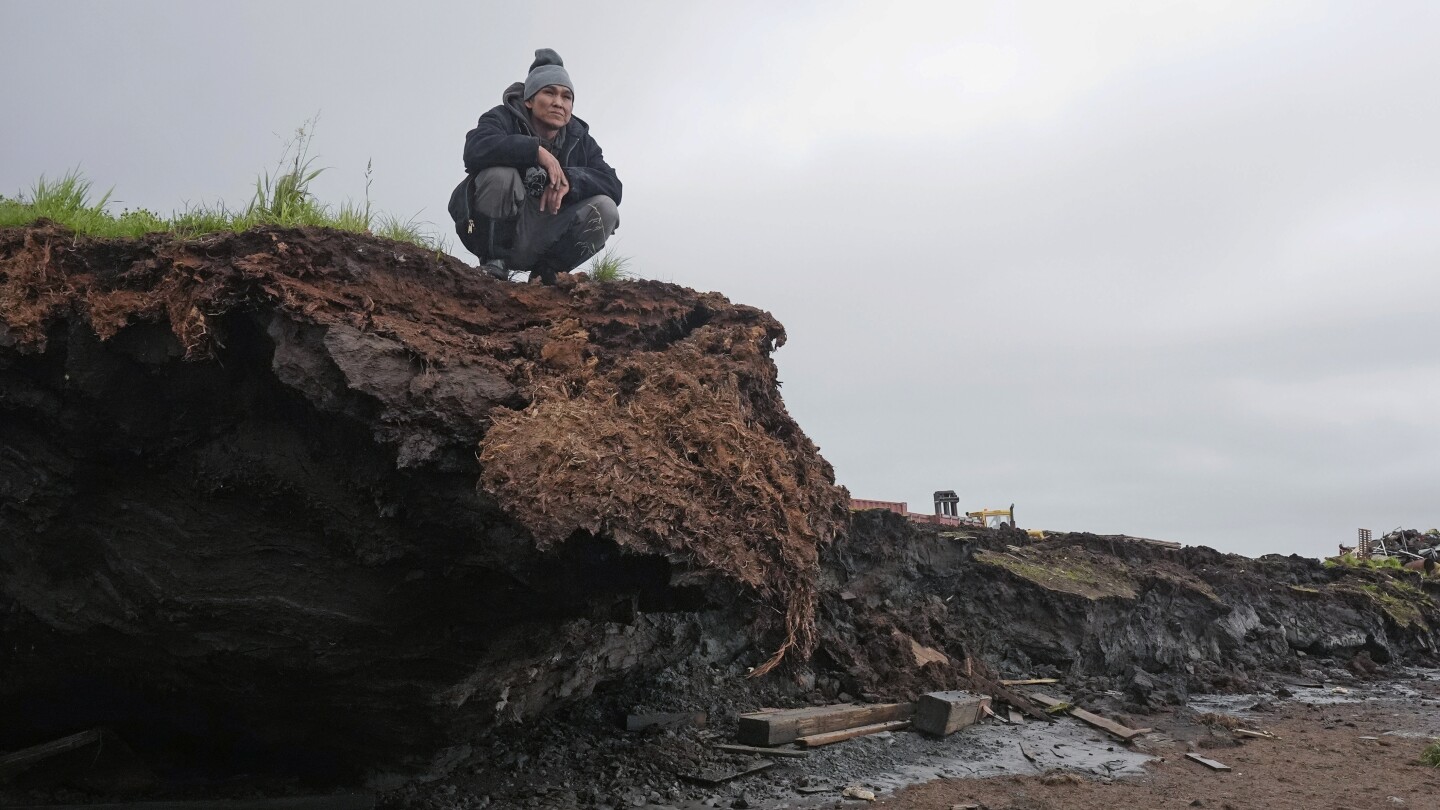Growing up along the banks of the Ninglick River in western Alaska, Ashley Tom would look out of her window after strong storms from the Bering Sea hit her village and notice something unsettling: the riverbank was creeping ever closer.
It was in that home, in the village of Newtok, where Tom’s great-grandmother had taught her to sew and crochet on the sofa, skills she used at school when students crafted headdresses, mittens and baby booties using seal or otter fur. It’s also where her grandmother taught her the intricate art of grass basket weaving and how to speak the Yupik language.
Today, erosion and melting permafrost have just about destroyed Newtok, eating about 70 feet (21.34 meters) of land every year. All that’s left are some dilapidated and largely abandoned gray homes scraped bare of paint by salt darting in on the winds of storms.
“Living with my great-grandmother was all I could remember from Newtok, and it was one of the first houses to be demolished,” said Tom.


